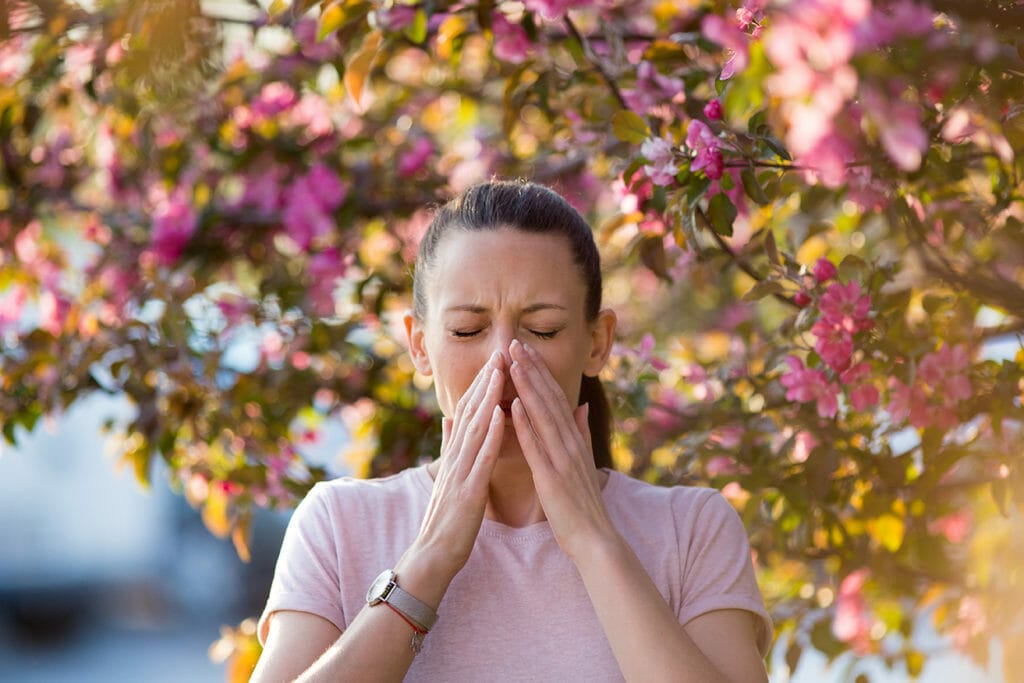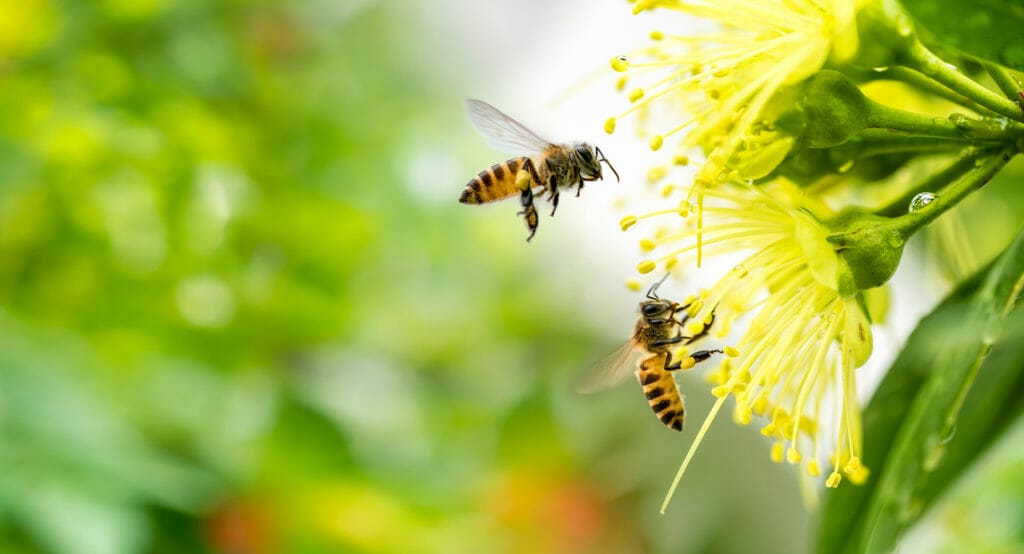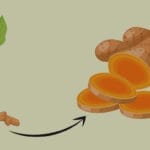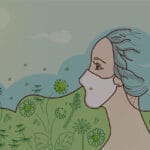Hay Fever, Pollen and Climate Change
Pollen may be not the first risk you would associate with the changing climate – but scientists are already predicting a rise in pollen production in excess of 200%[1]. Heat and increased levels of carbon dioxide which increase plant growth and growing seasons will lead to seasonal overlap and increased volumes. Not good news if you are a seasonal “hay fever” sufferer – it’s about to get worse for longer!
Worldwide, the sensitisation rate to pollen allergens is around 40% and over 400 million people suffer from allergic rhinitis symptoms caused by pollinosis[2]. Besides triggering seasonal rhinoconjunctivitis symptoms, a clinical condition also known as “hay fever”, pollen can also cause asthma, skin inflammation, and even food allergies due to the structural homology of food antigens to some pollen allergens[3].
Pollen sensitisation results from complex interactions between pollen-derived adjuvants co-delivered with allergens and the innate immune network[4]. These pollen-derived adjuvants are thought to contribute to the generation of a pro-inflammatory microenvironment at exposure sites that prime dendritic cells to favour Th2 polarisation in the draining lymph nodes. Leading to a prolonged period of allergenic response and a loss of functionality.

Pollen and Sars Cov-2
Pollen exposure also weakens the immunity against certain seasonal respiratory viruses by diminishing the antiviral interferon response. Airborne pollen, sometimes in synergy with humidity and temperature, has been shown to explain, on average, 44% of the infection rate variability say the researchers of a PNAS paper after studying 31 countries across 5 continents[5]. Infection rates increased after higher pollen concentrations most frequently during the four previous days. Without lockdown, an increase in pollen abundance by 100 pollen/m3 resulted in a 4% average increase in infection rates. Lockdown halved infection rates under similar pollen concentrations, and effective mask-wearing further reduced risk.
If one considers the huge effect of ongoing climate change and urbanisation on the long-term trends in airborne pollen and pollution levels as well as current and emerging viral infections, it is of utmost importance to forecast the associated risk for human health in future pandemics and take appropriate measures to reduce it as much as possible. You see co-exposure is not the exception but the rule under natural conditions, and, hence, modelling and forecasting of ongoing and future pandemics ought to consider the whole “soup” of exposome risk from all environmental challenges.
Natural Management of Pollen Exposure
Obviously, the human immune system has many variabilities and not all people express sensitivity or clinically relevant responses to pollen or pollution – but the immunological tipping point is evolving and in doing so is drawing in more people to a symptom profile as the combination of diminished immune tolerance and higher environmental exposures rise.
The use of butterbur, feverfew and riboflavin may be considered as an intervention to reduce inflammation responses and aid pain management[6]. Extracts of butterbur have been used in bronchial asthma, smooth muscle spasms, and headache, and studies have shown that petasines inhibit the biosynthesis of leukotrienes, which may be associated with antispasmodic activity and anti-inflammatory action in type I hypersensitivity[7].
Turmeric and its active ingredient curcumin were identified in a pilot trial involving 241 patients who saw a 2-month supplementation programme reduce allergic symptoms related to pollen and environmental triggers[8].
Quercetin is a naturally occurring polyphenol flavonoid that is rich in antioxidants. It has anti-allergic functions that are known for inhibiting histamine production and pro-inflammatory mediators. Quercetin has a long story of usage in human history, has demonstrated sufficient efficacy and has no significant side effects. It has the potential to reduce the most significant pathologies of asthma and allergic rhinitis such as eosinophil and neutrophil recruitment, the activation of bronchial epithelial cells, collagen and mucus production and airway hyperactivity[9]. It also can suppress the production of both periostin and periostin-induced eosinophil chemoattractants, resulting in the improvement of the clinical condition of allergic rhinitis[10].
Whether the trigger is dust mites, pollens, grasses, pollutants, or foods, allergens trigger the production of antibodies known as immunoglobulin E (IgE). These IgE antibodies then attach to mast cells and basophils causing them to release copious amounts of histamine, pro-inflammatory prostaglandins and cytokines. Quercetin has a strong affinity for mast cells and basophils and once attached, it stabilises the cell membrane to ultimately prevent cell degranulation and histamine release, reducing symptoms and stabilising environmental responses[11].
In one study, quercetin was shown to significantly inhibit antigen-stimulated histamine release from mast cells obtained from the nasal mucosa of individuals with perennial allergic rhinitis. Quercetin’s effect was almost twice that of sodium cromoglycate at the same concentration[12].
Natural mast cell stabilisers include Vitamin D (3), quercetin, luteolin. Vitamin C also has a role in mast cell stabilisation[13]. All of which are safe and provide multiple additional immune support and tolerance benefits.

Summary
At this time, the world appears to be transitioning to a different place than it was 2 years ago – everyone is now aware that times change and with them, so do established orders, and tolerance. Whilst it can be overwhelming, sad, frightening, and confusing, managing personal health remains the domain of the individual and their health care providers. Taking personal responsibility to identify risks and use low-risk effective interventions allows for personal sovereignty – hold and protect that choice – it’s all too easy to have it taken away.
References
[1] Zhang, Y., Steiner, A.L. Projected climate-driven changes in pollen emission season length and magnitude over the continental United States. Nat Commun 13, 1234 (2022).
[2] Lake IR, Jones NR, Agnew M, Goodess CM, Giorgi F, Hamaoui-Laguel L, et al. Climate change and future pollen allergy in Europe. Environ Health Perspect. 2017;125(3):385–91
[3] Wuthrich B, Straumann F. Pollen cross-reactivity can we establish a link between the in vitro results and the clinical situation? Allergy. 1997;52(12):1187–93
[4] Pointner, L., Bethanis, A., Thaler, M. et al. Initiating pollen sensitization – complex source, complex mechanisms. Clin Transl Allergy 10, 36 (2020).
[5] amialis A, Gilles S, Sofiev M, Sofieva V, Kolek F, Bayr D, Plaza MP, Leier-Wirtz V, Kaschuba S, Ziska LH, Bielory L, Makra L, Del Mar Trigo M; COVID-19/POLLEN study group, Traidl-Hoffmann C. Higher airborne pollen concentrations correlated with increased SARS-CoV-2 infection rates, as evidenced from 31 countries across the globe. Proc Natl Acad Sci U S A. 2021 Mar 23;118(12
[6] Schapowal A; Petasites Study Group. Randomised controlled trial of butterbur and cetirizine for treating seasonal allergic rhinitis. BMJ. 2002 Jan 19;324(7330):144-6.
[7] Brune K, Bickel D, Peskar BA. Gastro-protective effects by extracts of Petasites hybridus: the role of inhibition of peptido-leukotriene synthesis. Planta Med. 1993 Dec;59(6):494-6.
[8] Wu S, Xiao D. Effect of curcumin on nasal symptoms and airflow in patients with perennial allergic rhinitis. Ann Allergy Asthma Immunol. 2016 Dec;117(6):697-702.e1. doi: 10.1016/j.anai.2016.09.427. Epub 2016 Oct 24.
[9] Yang D, Wang T, Long M, Li P. Quercetin: Its Main Pharmacological Activity and Potential Application in Clinical Medicine. Oxid Med Cell Longev. 2020;2020:8825387. Published 2020 Dec 30.
[10] Jafarinia, M., Sadat Hosseini, M., kasiri, N. et al. Quercetin with the potential effect on allergic diseases. Allergy Asthma Clin Immunol 16, 36 (2020).
[11] Park HH, Lee S, Son HY, Park SB, Kim MS, Choi EJ, Singh TS, Ha JH, Lee MG, Kim JE, Hyun MC, Kwon TK, Kim YH, Kim SH. Flavonoids inhibit histamine release and expression of proinflammatory cytokines in mast cells. Arch Pharm Res. 2008 Oct;31(10):1303-11.
[12] Thornhill SM, Kelly AM. Natural treatment of perennial allergic rhinitis. Altern Med Rev. 2000 Oct;5(5):448-54. PMID: 11056414.
[13] Quercetin and Vitamin C: An Experimental, Synergistic Therapy for the Prevention and Treatment of SARS-CoV-2 Related Disease (COVID-19)







